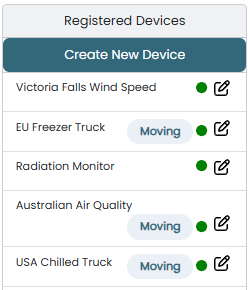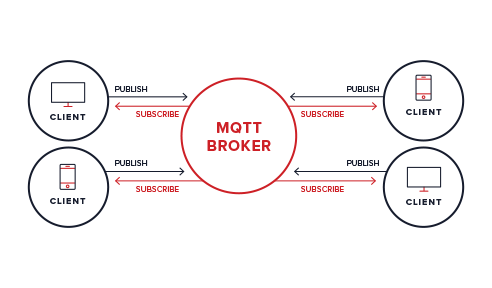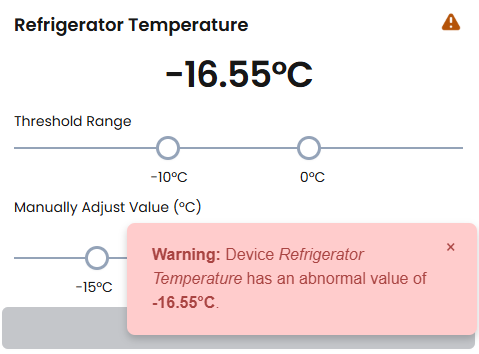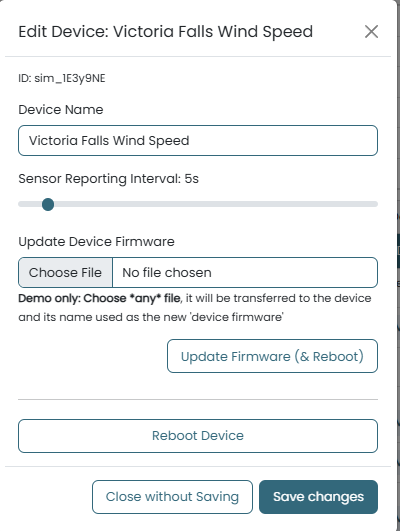Building an IoT solution involves managing real-time communication, monitoring device statuses, and ensuring seamless scalability. PubNub provides a robust platform to handle these requirements, enabling real-time IoT device control, data streaming, and low-latency communication for connected devices. We provide you with simple and flexible APIs and take away your infrastructure concerns, so all you need to worry about is gathering data.
Want to jump into the action immediately? These devices are powered by PubNub Signals and you can control it all through a managed dashboard.
Why Use PubNub for Your IoT Solution?
PubNub offers unique capabilities for building IoT solutions that allow you to connect, monitor, and manage IoT devices in real time while maintaining security and scalability.
Realtime Messaging: Instantly communicate with and control IoT devices.
Device Status Monitoring: Track device status in real time using Presence Events.
Multi-Protocol Support: Integrate with protocols like MQTT and custom firmware to ensure interoperability and compatibility.
IoT Device Management: Simplify device configuration, provisioning and management.
Edge Messaging: Optimize latency with edge computing and real-time updates.
Serverless Computing: Functions for serverless computing in response to events.
Turnkey Analytics: PubNub Insights for device behavior monitoring, metrics for analysis, and more.
Respond Instantly on Live Inputs: PubNub Illuminate is a real-time decisioning and analytics product customizable to an organization’s unique use case.
Kafka and RabbitMQ Support: Bridge events using our Kafka and RabbitMQ Integrations
How does PubNub Communicate with your IoT Devices?
What you need depends purely on your ecosystem’s requirements, but here are some common features you’ll want to consider.
Sending/Receive Messages with IoT Devices
PubNub is based on the pub/sub model that allows your IoT devices to communicate. To receive messages sent to a particular channel, you subscribe to it. When you publish a message to a channel, PubNub delivers that message to everyone who subscribed to that channel. While there is no required way to name channels, we do have a recommended channel naming convention guide.
For your app to react to events and messages, you would implement event listeners. You can implement custom app logic to respond to each type of message or event. You can learn more about listeners in our documentation.
Device Status Monitoring
Presence allows you to monitor device statuses, such as online or offline state, and even store custom state information. Enable Presence in your PubNub dashboard to be able to monitor the status changes for devices in your ecosystem.

MQTT Support
MQTT (Message Queuing Telemetry Transport) is a lightweight messaging protocol for real-time communication between devices. MQTT has a publish and subscribe communications protocol similar to PubNub, where clients subscribe to topics and all communications go through a central server, referred to as a broker. The MQTT broker acts as the central server in the protocol, managing communication between clients:

Luckily, we’ve made it easy to integrate MQTT devices into the PubNub DSN utilizing our MQTT bridge, which allows you to simply put your pub/sub credentials into your device identifier and PubNub takes care of the rest.
Geolocation Tracking
An extremely popular feature is to track device locations in real time. While it is possible to do this using messages, PubNub Signals are ideal for high-volume, low-cost use cases. They’re intended to send small bits of data, where the last sent data is the only important piece of information, so they are perfect for GPS coordinates.
![]()
Store/Retrieve Messages and Device Metadata
You can store/and retrieve messages utilizing Message Persistence, which is especially useful for storing and retrieving historical data for future analysis or errors within your system. You can then use PubNub Insights to manage and visualize this data and PubNub Illuminate to make instant, data-driven decisions based on this data.

App Context is a feature that is essentially serverless storage to persist metadata about users, channels, and memberships. This means that you can store predefined and custom metadata about your devices and the relationships between the channels they communicate data. Similar to messages, signals, and presence events, PubNub triggers app context events in real time whenever data changes. You can also manage the data stored in App Context through a no-code GUI with BizOps Workspace!

Serverless Computing
Functions allow you to capture events that are happening on the PubNub Platform. You can write code or leverage existing integrations to transform, re-route, augment, filter, and even aggregate data at the edge with ultra-low latency. These could include routing data to a separate server for logging, utilizing machine learning with Falkonry to interpret data from industrial activity and IT processes, Wia to trigger device action and monitor state, and so much more.
Want to implement an IoT Solution?
These features were some of the core foundations of PubNub, but there’s so much more: mobile push notifications to notify your offline users, PubNub Insights for device behavior monitoring, and utilizing Access Manager to secure your IoT Solution. Regardless of what system you want to build, PubNub makes it easy to build scalable, real-time IoT solutions with robust device management, low latency, and seamless data streaming. If you would like to learn more, we recommend checking out the following content to get you started:
Follow a tutorial to manage, control, and receive updates from remote IoT devices with a highly scalable architecture.
Build a condition monitoring dashboard for monitoring industrial equipment conditions and sensors in real time.
Our extensive documentation includes popular SDKs such as Python and Rust.
Feel free to reach out to the Developer Relations Team at devrel@pubnub.com for any questions or concerns.